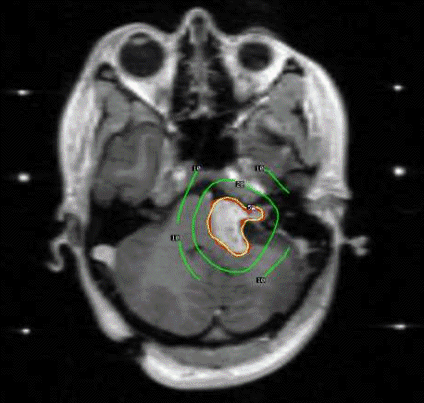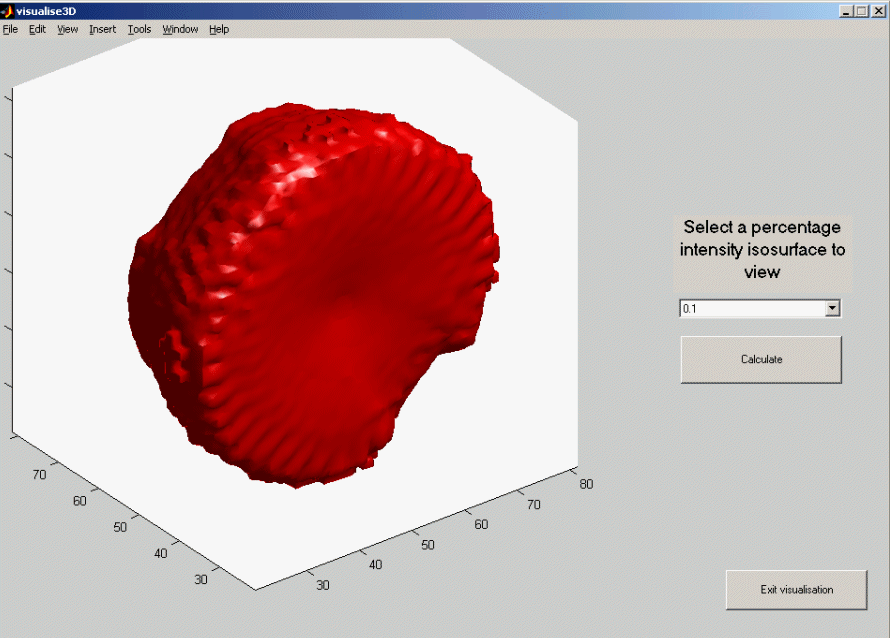
Gamma Knife: many beams, one focus
Gamma Knife® Radiosurgery is a non-invasive medical procedure that uses beams of ionising photons from 201 60Co sources to treat intra-cranial lesions (Elekta/Leksell Gamma Knife). The Gamma Knife® unit comes with a treatment planning system - GammaPlan® - that uses an approximate description of the photon interactions within the head of the patient to calculate the energy dose deposited by these photons in the region of the tumour. There is significant benefit to be obtained from improving the fidelity of these calculations, particularly in cases where photons traverse regions of widely differing electron densities (e.g. soft tissue and bone). Monte Carlo modelling can accommodate these complexities and can play a useful role in complementing the GammaPlan solution (with the potential to eventually supersede it in the event of short enough calculation times).
The work of GEMSS has produced a Monte Carlo simulation tool for Gamma Knife radiosurgery - RAPT - based around the open source EGS4 (Electron Gamma Shower 4) Monte Carlo code. Grid computing has been explored as a means of keeping compute times to an acceptable minimum. The GEMSS Grid enables calculation of the energy dose delivered to the brain from a Gamma Knife® treatment unit to be obtained in clinically useful timescales (less than one hour).


The Leksell Gamma Knife


